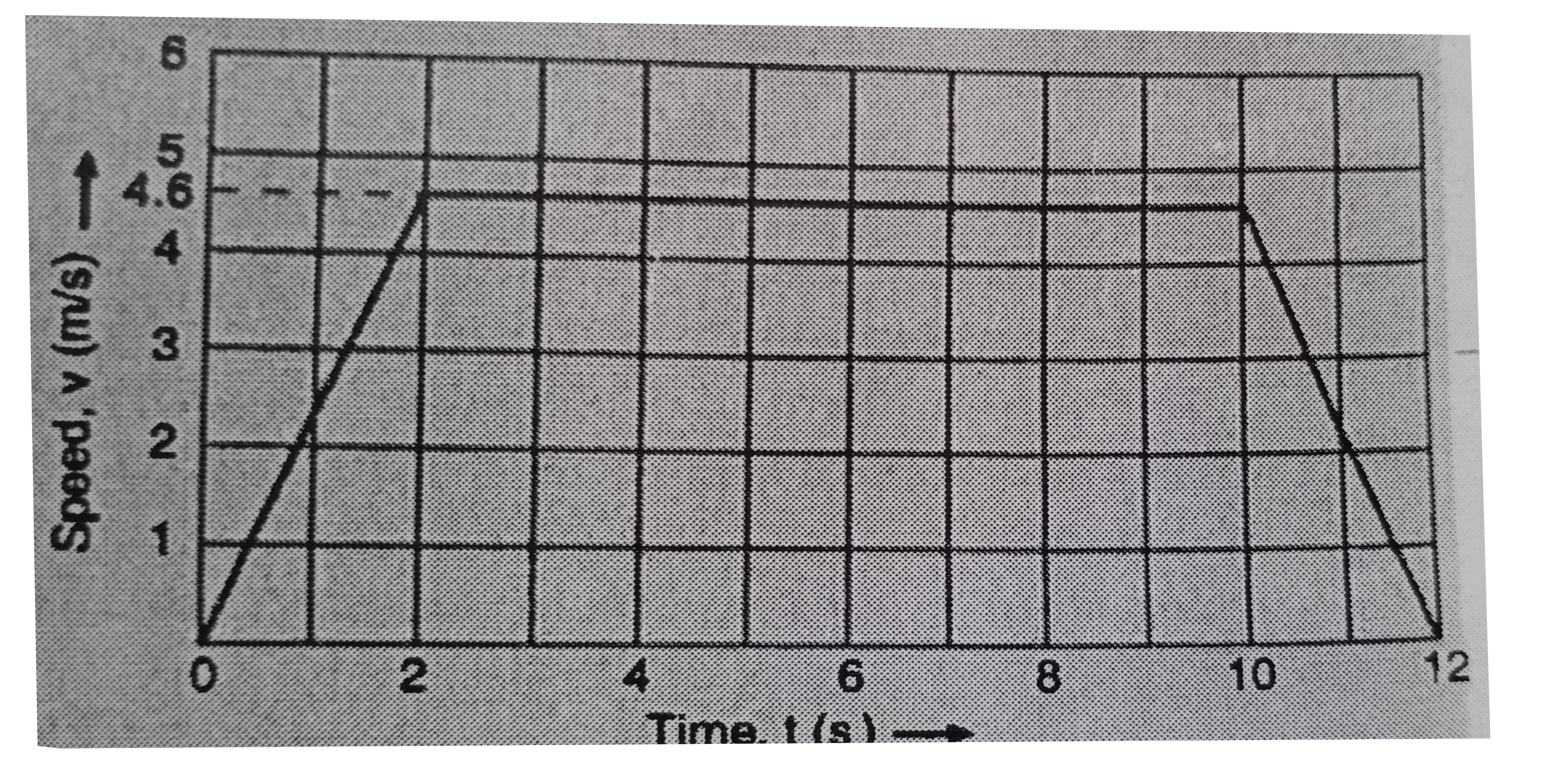A car is moving on a striaght road with uniform acceleration. The following table gives the speed of the car at various instants of time :
Speed(m/s) :51015202530Time(s) :01020304050
Draw the speed-time graph by choosing a convenient scale. Determine from it :
(i) the acceleration of the car.
(ii) the distance travelled by the car in 50 seconds.
We take a graph paper and plot the above given time values on the x-axis. The corresponding speed values are plotted on the y-axis. The speed-time graph obtained from the given readings is shown in Figure 42. Please not that in this case, when the time is 0, then the speed is not 0. The body has an initial speed of 5m/s which is represented by point A in Figure 42. We will now answer the questions asked in this sample problem.
(i) Calculation of Acceleration. We know that :
Acceleration = Slope of speed-time graph
= Slope of line AF (see Figure 42)
=FGAG
Now, if we look at the graph shown in Figure 42, we will find that the value of speed at point F is 30 m/s and that at point G is 5 m/s.
Therefore, FG= 30-5
= 25 m/s
Again, at point G, the value of time is 50 seconds whereas that at point A is 0 second.
Thus, AG= 50-0
= 50 s
Now, putting these values of FG and AG in the above relation, we get :
Acceleration = 25m/s50s
=0.5m/s2
(ii) Calculation of Distance Travelled. The distance travelled by the car in 50 seconds is equal to the area under the speed-time curve AF. That is, the distance travelled is equal to the area of the figure OAFH (see Figure 42). But the figure OAFH is a trapezium. So,
Distance travelled = Area of trapezium OAFH
=(Sum of two parallel sides)×Height2
In Figure 42, the two parallel sides are OA and HF whereas the heights is OH. Therefore,
Distance travelled = (OA+HF)×OH2
=(5+30)×502
=35×502 ltBrgt = 875 m
Topper's Solved these Questions
- MOTION BOOK - LAKHMIR SINGH & MANJIT KAURCHAPTER - MOTION EXERCISE - VERY SHORT ANSWER TYPE QUESTIONS
3 Videos
- MOTION BOOK - LAKHMIR SINGH & MANJIT KAURCHAPTER - MOTION EXERCISE - SHORT ANSWER TYPE QUESTIONS
1 Video
- MOTION BOOK - LAKHMIR SINGH & MANJIT KAURCHAPTER - MOTION EXERCISE - NCERT BOOK QUESTIONS AND EXERCISES
3 Videos
- MODEL TEST PAPER 5BOOK - LAKHMIR SINGH & MANJIT KAURCHAPTER - MODEL TEST PAPER 5EXERCISE - Section B
2 Videos
- SOUNDBOOK - LAKHMIR SINGH & MANJIT KAURCHAPTER - SOUNDEXERCISE - Value Based Questions
20 Videos
Similar Questions
A car is moving on a straight road with uniform acceleration. The speed of the car varies with time as follows :
Time(s) :0246810Speed(m/s) :4812162024
Draw the speed-time graph by choosing a convenient scale. From this graph :
(i) Calculate the acceleration of the car.
(ii) Calculate the distance travelled by the car in 10 seconds.

View SolutionA car acquires a velocity of 72km/h in 10 seconds starting from rest. Find (a) the acceleration (b) the average speed ( c ) the distance travelled in this time.
View Solution
Knowledge Check
Find the distance travelled by a car with speed 22.5 m/s in 50 min
A112.5 kmB11.25 kmC56.25 kmD67.5 kmA car travels at a speed of 50 m/s. for 5 hours. What is the distance (in km) travelled by the car?
A1000B900C990D500A car moving on a straight road accelerated from a speed of 4.1m/s to a speed of 6.9m/s in 5.0 s. Then its average acceleration is
A0.5m/s2B0.6m/s2C0.56m/s2D0.65m/s2
Find the acceleration of the car, if it changes its velocity from 20ms−1 to 30ms−1 in 5 seconds.
View SolutionThe speed of a car as a function of time is shown in figure.

Find the distance travelled by the car in 8 seconds and its acceleration.
View SolutionA car accelerates uniformly from 18km/h to 36km/h in 5 second. Calculate (i) the acceleration and (ii) the distance covered by the car in that time .
View SolutionA driver decreases the speed of a car from 25 m/s to 10 m/s is 5 seconds. Find the acceleration of the car.
View SolutionTheangular speed of a car increases from 600 rpm to 1200 rpm in 10 s .What is the angular acceleration of the car ?
View Solution